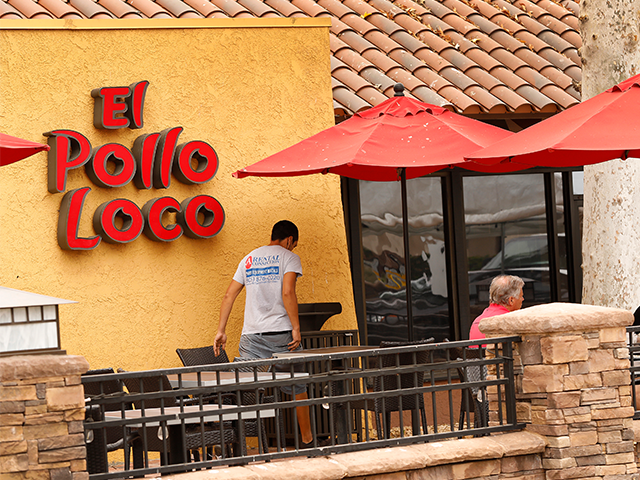Would You Like a Side of Inflation with That?
$43.99. That is the price of “12 delicious pieces of fire-grilled chicken with a choice of 3 large sides, warm tortillas and fresh salsa” at El Pollo Loco, at least according to one online influencer.
(I checked the prices for the same meal at the local franchise in my suburban-Los Angeles neighborhood, and it’s $41.79; so prices do vary a little bit.)
As the political class debates whether Joe Biden is going to actually get nominated by the Democrat Party, much of America is dealing with a new reality: fast food is no longer synonymous with cheap food.
We see Bidenflation all around us in new ways every day.
Walmart last month rolled out digital shelf labels – so that they can more easily raise your prices. Their explanation for the new technology needs to be seen to be believed: “It is not only about improving efficiency and customer satisfaction, but also about integrating sustainability into our work, in this case, to help reduce operational waste,” wrote Daniela Boscan, a Walmart “Team Lead Manager.” “We are excited about the positive impact this innovation will have on our operations and the environment.”
Oh, so it’s about saving the environment, not gouging customers… and that will increase “customer satisfaction.”
Riiiight.
Wendy’s floated a similar tactic, pitching their loyal customers “dynamic pricing,” which is corporate-speak for we charge you as much as we can that day. They backpedaled when it became clear consumers saw through the lies.
I’d like to ask the media members desperate to convince us that prices are “stabilizing” if they regard it as coincidental that digitally controlled price tags are coming into prominence now.
Another issue for the “stabilization” crowd is shrinkflation, where prices stay the same but size/quantity decreases.
Shrinkflation at Chipotle recently went viral as customers—I mean citizen journalists—whipped out their camera to document the skimpifying of portions. (Hat tip to CNBC for reminding me of this.)
This is all a reminder that when the price of chicken skyrockets, everyone suffers.
Consumer Credit Card Debt on the Rise
Consumer Credit Card Debt surged in May. This is especially bad news considering last month saw the first decrease in overall revolving credit card debt since the pandemic. Total consumer credit rose in May to $11.3 billion; it was up $6.5 billion the prior month, according to the Federal Reserve. Economists surveyed by the Wall Street Journal predicted an $8 billion gain.
Non-revolving debt also grew in May.
The question, of course, is why was the number so big? Traditionally, borrowing is a sign of confidence that you will earn future income. But is that the case here? Given the fact that families are seeing their budgets grow on a monthly basis (as is the case in inflationary periods), and that APRs have surged to a record level, are Americans borrowing out of confidence or just simply to make ends meet?
Our fear is that it’s the latter. If that is the case, it is only a matter of time before the whole financial apparatus collapses. Let’s hope it doesn’t come to that.
Looking Ahead
With the Republican National Convention just a week away, Trump’s party released its platform on Monday. It includes tax cuts. Good.
The June consumer price index will be released Thursday, and the producer price index data will be released on Friday. These numbers, combined the mixed (if I’m being charitable) jobs data from last week, will provide us a clear snap shot of the shape of the economy. Then we will be able to make some inferences as to when the Fed could potentially cut interest rates this year, if at all.

COMMENTS
Please let us know if you're having issues with commenting.